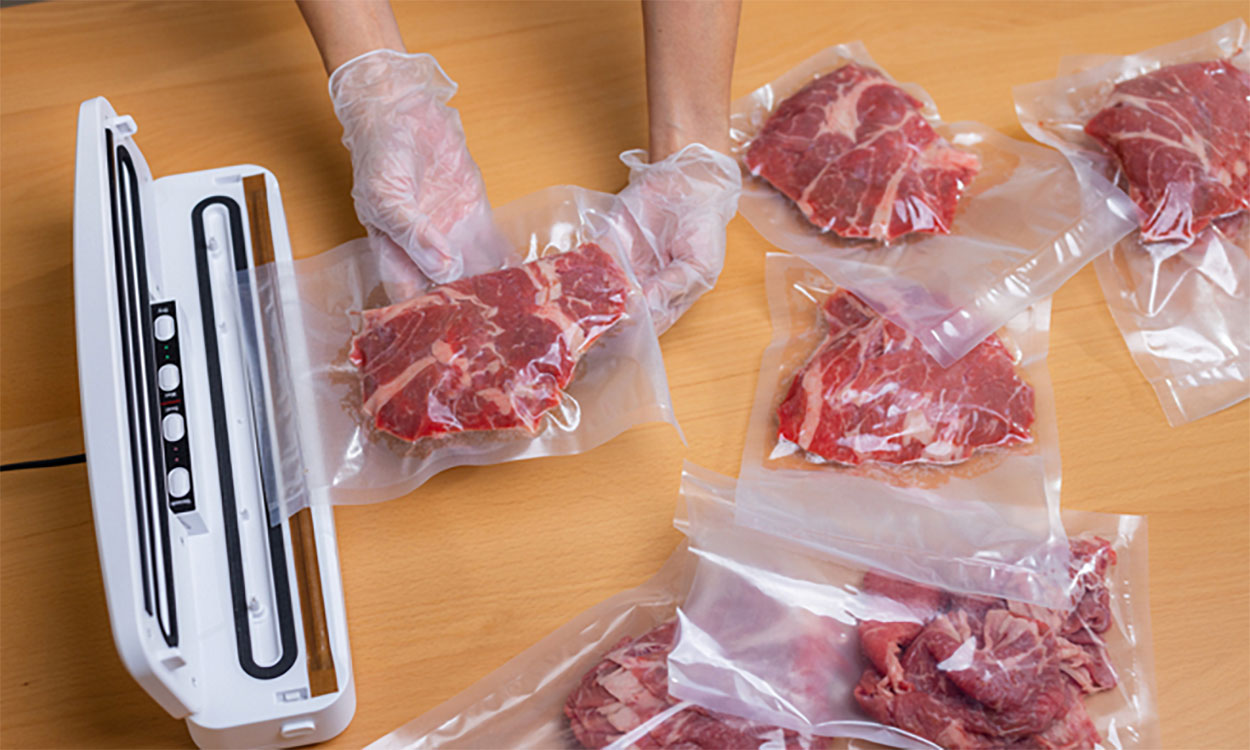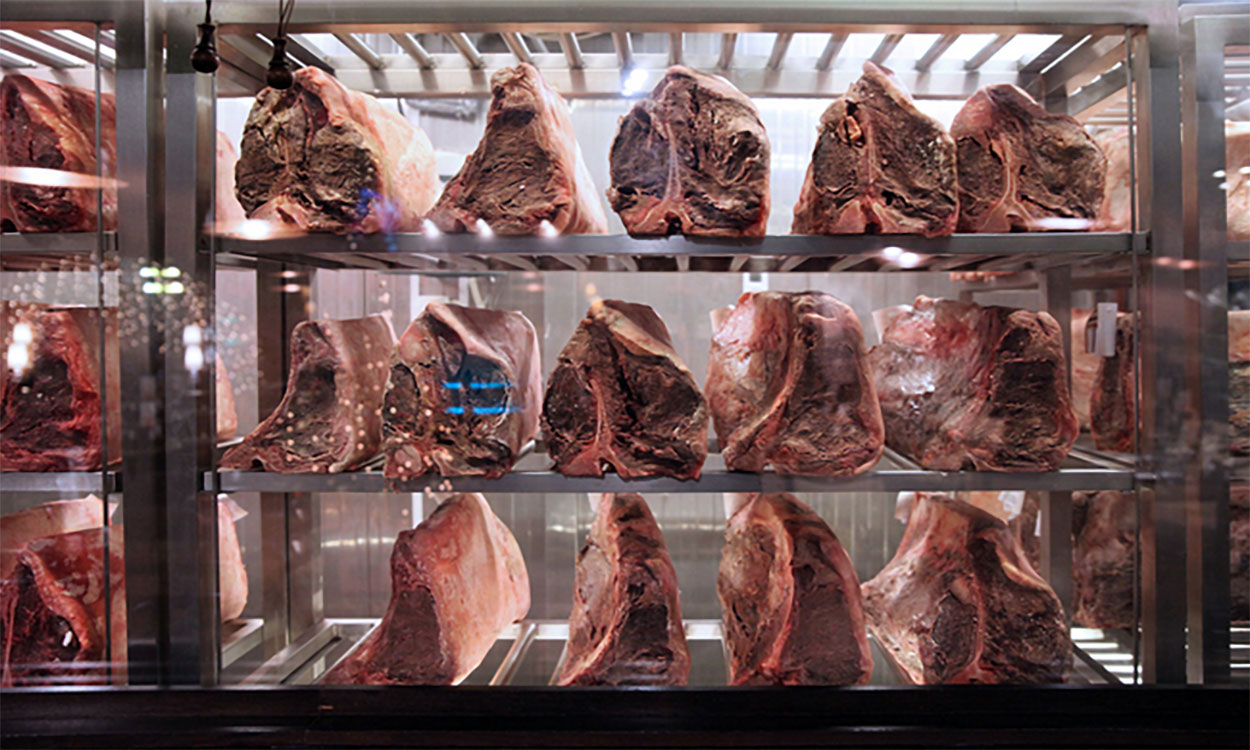Source: South Dakota State University, Christina Bakker, Assistant Professor and SDSU Extension Meat Science Specialist
Additionally, beef is generally marketed on a price per-pound basis. This means that it is within the processor’s best interest to minimize product weight loss during processing.
Understanding Aging
Aging is a commonly used practice that uses a carcass’s own enzyme system to improve tenderness. Within a living animal, proteins are constantly being broken down (degraded) and built back up in a cycle of protein turnover. This is an important system that allows an animal to heal damaged muscle and to build new muscle tissue.
A large portion of muscle degradation is caused by an enzyme called calpain, which has been shown to be active after an animal is harvested. By allowing carcasses to age, we allow calpain to continue to degrade proteins, which improves the tenderness of meat products. There are two main types of aging used in the meat industry: wet aging and dry aging.
Wet Aging

Wet aging is commonly used on products found in most retail settings. During this process, cuts of meat are placed in vacuum-sealed packaging and left in refrigerated temperatures. One of the benefits of wet aging is that the meat cuts lose very little weight, because the product is not exposed to air, which would lead to dehydration.
Dry Aging

Dry aging is the process of leaving whole carcasses or cuts of meat in refrigerated conditions without the use of packaging to prevent moisture loss. One of the benefits of dry aging is that, by allowing moisture loss, the flavor of the meat becomes more intense and concentrated than wet-aged products.
Investigating Cooler Shrink
Commonly, small meat processors dry age sides of beef for anywhere between 7 to 21 days prior to fabricating for their customers. However, the amount of weight lost during that time is not always understood by those customers requesting longer aging times.
A small study was conducted at the SDSU Meat Lab to determine the amount of weight (cooler shrink) a side of beef would lose over 21 days of dry aging. The temperature of the aging cooler was 37 ± 3 degrees Fahrenheit with a humidity of approximately 80%. The sides of beef were weighed daily for the first 8 days from day 0 to 7, as well as days 14 and 21. Day 0 was the day of harvest.
Carcass data are presented in Table 1. The carcasses represented a large range of hot carcass weights, ribeye areas, backfat thicknesses, and yield grades. Table 2 shows the percentage of weight each side lost over the 22-day trial. There were several instances where the percentage of weight loss decreased from one day to the next. This is due to the accuracy of the carcass scale used, as it records weight to the nearest pound. If a carcass was not positioned in the same spot on the scale, an error of up to 1 pound can be observed.
The data from all 5 sides were averaged at the bottom of Table 2. The data indicate that the greatest change in carcass weight occurs from day 0 to day 3. Subsequently, carcasses lost approximately 0.1% of initial weight each day from day 4 to 21. Overall, each side lost 16 to 23 pounds from day 0 to 21. If we account for both sides, one carcass could lose approximately 32 to 46 pounds.
| ID | ||||||
|---|---|---|---|---|---|---|
| 1 | ||||||
| 2 | ||||||
| 3 | ||||||
| 4 | ||||||
| 5 |
Source: SDSU Research
| ID | |||||||||
|---|---|---|---|---|---|---|---|---|---|
| 1 | |||||||||
| 2 | |||||||||
| 3 | |||||||||
| 4 | |||||||||
| 5 | |||||||||
| Average |
Source: SDSU Research
In Summary
Cooler shrink is only one factor that determines retail cut yield of a beef carcass, but it is not an insignificant amount of weight. It is important for processors to measure and understand how much weight carcasses lose in their specific facility in order to effectively communicate all aspects of yield.









